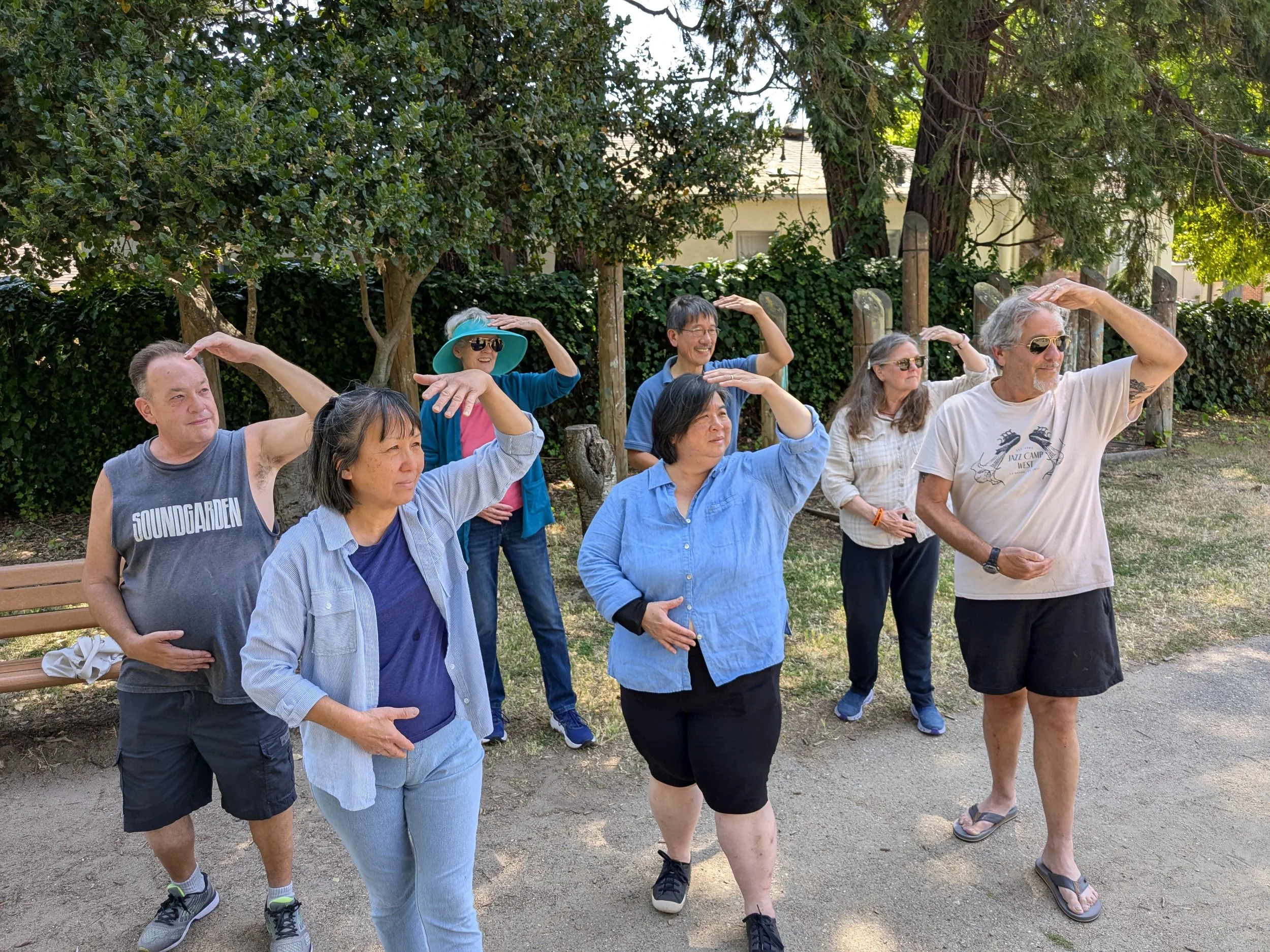Quieting the Monkey Mind
Grandmaster Hui Liu always emphasized the importance of practicing both the active and passive aspects of Dayan Qigong. ”The Form,” she explained, “is a moving meditation, the Yang expression of Dayan Qigong. Sitting meditation is the Yin expression of it. If you practice the Form, but do not practice meditation, your Form will be empty.”
“What’s the difference between a moving meditation and a passive meditation,” you may ask. “Nothing and everything” might be my reply. We’re practicing Stillness in Action when we do the Form, and Action in Stillness when practicing sitting or standing meditation. The Yang expression of DYQG moves energy systematically throughout the body, clearing obstructions, expelling stagnant qi, thereby harmonizing or balancing the body-mind-spirit alchemy. The Yin aspect of DYQG provides an opportunity for us to become steeped in that sense of wholeness, allowing qi to attend places in the body that need healing.
Have you ever gone into another room to get something (let’s say the kitchen, garage or a bedroom), and upon arriving could not remember why you were there? Turns out, the question is not, “HAS that ever happened.” The real question is, “HOW OFTEN does that happen.”
The mind is a powerful tool. It can literally move you from one room to another and leave you standing there wondering why . . . while it flits off considering something else. Who is in charge when you pick up your fork? Is it the fork? You an NOT your mind. The mind is a tool…a tool for noticing contrasts (degrees of same and difference), a tool for navigation, strategic planning, and problem solving. And as is true with all tools, the mind needs to REST when we need to take a break. Our minds should not be keeping us up at night, creating anxiety, running us ragged, or leaving us abandoned in the kitchen.
People often say—with a tinge of resolve, pride, or sometimes exasperation—“Oh I can’t meditate. I have too much of a monkey mind.” This tells me immediately that they have a misguided, rigid idea about meditation . . . They have made it too precious and inaccessible as a concept.
It is helpful for beginning students to think of Meditation as nothing more than a practice of Regaining Control Over Your Mind. It does require some seat time, however, or a sustained focusing activitiy like Standing meditation, Walking meditation, or Sitting meditaiton.
We live in a society constantly bombarded with too much input, media, and information. Think of meditation is a gift that we give to ourselves…like a no-cost, mini-vacation from work, worry or problem-soving. Developing a regular meditation practice is a wise, easy selfcare practice anyone can achieve to relieve stress, improve grounding, and renew one’s spirit. The trick is to start slowly, set “do-able” goals that fit within your everyday lifestyle (baby steps). And more importantly, establish Time For Yourself as a PRIORITY, even if it’s only 5 or 10 minutes, three times a week.
A simple recipe for success is to 1) choose a specific time, place and style of meditation that appeals to you (e.g., Standing, Walking, or Sitting meditaiton); 2) write down the specifics of your commitment. NOTE: Writing something like: “8 PM, living room, Monday & Thursday evenings, plus 9 AM on Saturday morning” concretizes the appointment you are making with yourself. Subliminally, everytime you walk past that spot in your living room you will be reminded of your commitment. And 3) Keep your practice SIMPLE. Give your mind a single focus (maybe just noticing the “in breath” as you are breathing in, and the “out breath” as you exhale . . . not controlling your breath . . . just noticing. As you focus on breathing, notice how quickly your mind begins to wander. And as it does, gently refocus your attention again, noticing the “in breath” as you are breathing in, and the “out breath” as you exhale. Remind yourself that it’s okay to be quiet now.
This simple procss of quiet meditation provides an opporotunity to witness the mind’s antics, quieting and slowing it down, rather than allowing the mind to run you ragged. During a 5-minute meditation, if you had to corral your mind 50 times, I would say you had a very successful meditation session. Good news: The more you practice meditation, the easier it becomes to quiet your mind.
Start with just 3-5 mnutes, maybe two or three times a week. Acknowledge your progress and success while achieving your goals. When achieving your first goal becomes easy, either increase the number of times per week OR lengthen the amount of meditation time in small (do-able) increments.
And be kind to yourself. Remember: Flowers do not effort and neither should you. Medittaion is the art of allowing ourselves to just BE.





